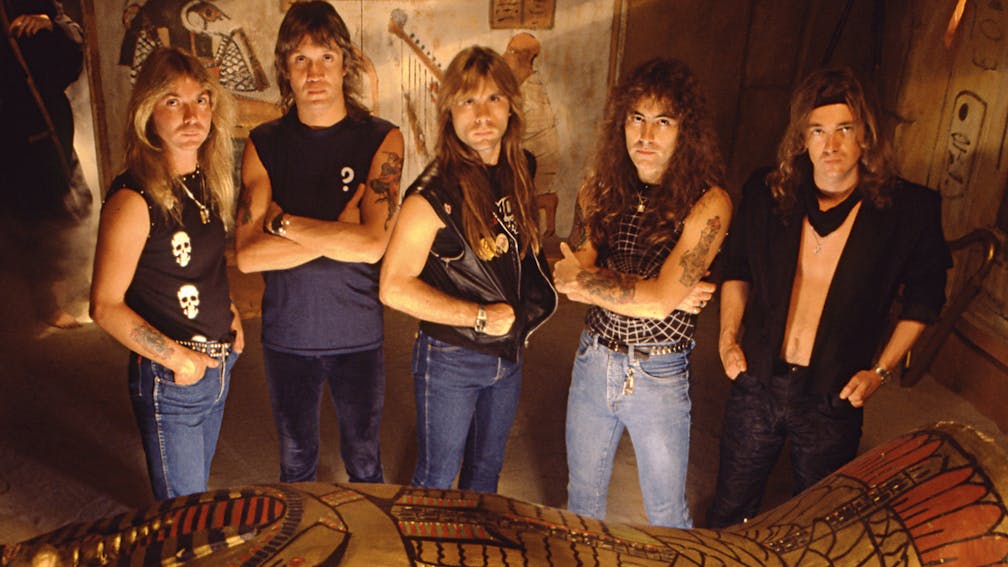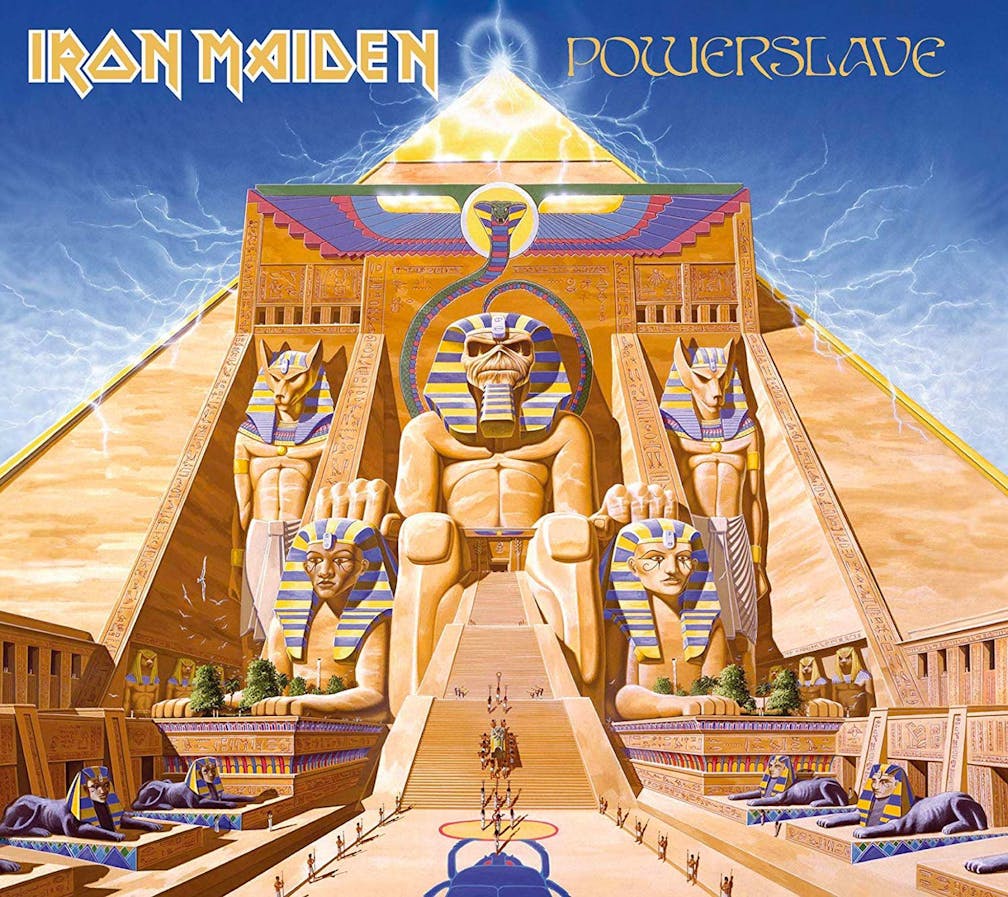The story of Powerslave, one of the most glorious Iron Maiden eras
In 1984, Iron Maiden released their groundbreaking album Powerslave. Here’s the story behind the heavy metal masterpiece…

There must come a day when every band peaks. When they simply can’t continue to grow, to get more successful, to make their world tours any more epic and grandiose. To crib from Aragorn son of Arathorn, it is not this day.
Following the two mammoth tours that accompanied The Number Of The Beast and Piece Of Mind, Iron Maiden would have been forgiven for taking their foot off the pedal. For taking a breather, even. Instead, they girded their spandex-clad loins and got ready to undertake one of the biggest, most extensive, most spectacular and downright legendary tours in rock history.
In order to do so, they needed an equally epic album to feed off. Step forward and take a bow, Powerslave.
Recorded at Compass Point studios in the Bahamas once more, Iron Maiden’s fifth album was also the band’s first to feature the same line-up as its predecessor. It contained punchy, compact Maiden classics such as Aces High and 2 Minutes To Midnight, but perhaps the most important song in terms of the band’s future evolution was Rime Of The Ancient Mariner. Clocking in at almost 14 minutes, it was the longest tune in their repertoire until the arrival of Empire Of The Clouds on 2015’s The Book Of Souls, and its multipart complexity set the tone for a direction the band would increasingly explore in later years.

Based on the 18th-century poem by Samuel Taylor Coleridge, it also showcased Maiden’s historical and literary approach to lyricism.
“It’s okay to write simple pop songs. There’s nothing wrong with that. But if kids went out and checked into Coleridge just because we wrote a song about it, then that’s really something,” bassist Steve Harris told Kerrang!. “The same sort of thing happened with To Tame A Land on the last album. The amount of people who went out and read Dune by Frank Herbert, which inspired it, was amazing.”
Released on September 3, 1984, Powerslave provided the band with their second consecutive million-plus seller in the States, where it reached Number 21 in the album charts. In the UK it was only kept off the top spot by the third instalment of the never-ending Now That’s What I Call Music! series – the sort of various-artists album that would have been ineligible just a few years later.
It was still a huge success, however, and it gave the band the platform to launch the mind-bogglingly vast World Slavery Tour. Running for more than 11 months – from August 9, 1984 to July 5, 1985 – it took in 189 shows and included their first tour in what was then the Eastern Bloc (documented in the video Behind The Iron Curtain), a four-night stint at the Hammersmith Odeon, runs in Japan and Australia, and their first-ever show in South America, playing the inaugural Rock In Rio festival to an estimated crowd of 350,000 people. And all this with a none-more-spectacular stage show themed around the Egyptian imagery of the album artwork and featuring gigantic sarcophagi, pyrotechnics of apocalyptic proportions and a 30-foot mummified Eddie.
Kerrang! was there as ever and a report from the opening show in Warsaw reckoned that “the enthusiasm for Aces High, the instrumental Losfer Words (Big ‘Orra) and older faves such as The Number Of The Beast and 22 Acacia Avenue was higher than a spaced-out spaceman”. Hey, it was the mid-’80s, that’s how we wrote back then.
A few years back, vocalist Bruce Dickinson told us that those Iron Curtain shows were some of the most pivotal he’s ever played in his life. “We were the first really full-on, high-profile band to go,” he recalled. “We represented that feeling of, ‘Wow! We’re a free country!’ It was nothing to do with rock’n’roll, it was all about the freedom from communism. It was a moment of hope and I felt like we were this beacon.”
Naming Rock In Rio as another life-changing moment, he added: “You can’t do shows like that too often, because you’d be fucking dead! I was so drained when I finally calmed down after it. I remember thinking afterwards that I couldn’t have done more, there was not a single cell in my body that wasn’t exhausted… We conquered an entire continent overnight with that one show. That was extraordinary.”
The whole tour was an extraordinary achievement, but it was one that took its toll on the members of the band. The sheer slog of the entire enterprise had everyone feeling burned out, although Bruce insisted that there were no internal tensions.
“At no point on the tour did we ever get to the point where anybody hated each other,” he told K! a year or so later. “We held that end of it together very well. Because we all realised what each of us was going through, and if someone threw a wobbler – which we all did at some point – it was, ‘Shall we leave the room and let him wreck the place and come back later?’ Because everyone was going through it.”
“The worst part is after you’ve been on the road for six months and you suddenly realise you’ve got another six months to do,” added guitarist Adrian Smith. “It’s like doing time. You’re kind of in your own cell anyway, a little cocoon – either in a plane or a hotel or a bus, and there’s security guards. It really cuts you off from real life.”
The tour might have been difficult to live through for the band, but for the fans it did yield one final treat in the shape of live double album Live After Death, still widely regarded as one of the finest live records in metal or any other genre. From the Winston Churchill speech preceding opener Aces High to Bruce’s now iconic exhortations of ‘Scream for me, Long Beach!’, not to mention adrenalised renditions of all their classic songs up to that point, it remains the next best thing to time travel if you want to experience Iron Maiden in one of their most glorious eras.
Read this next: